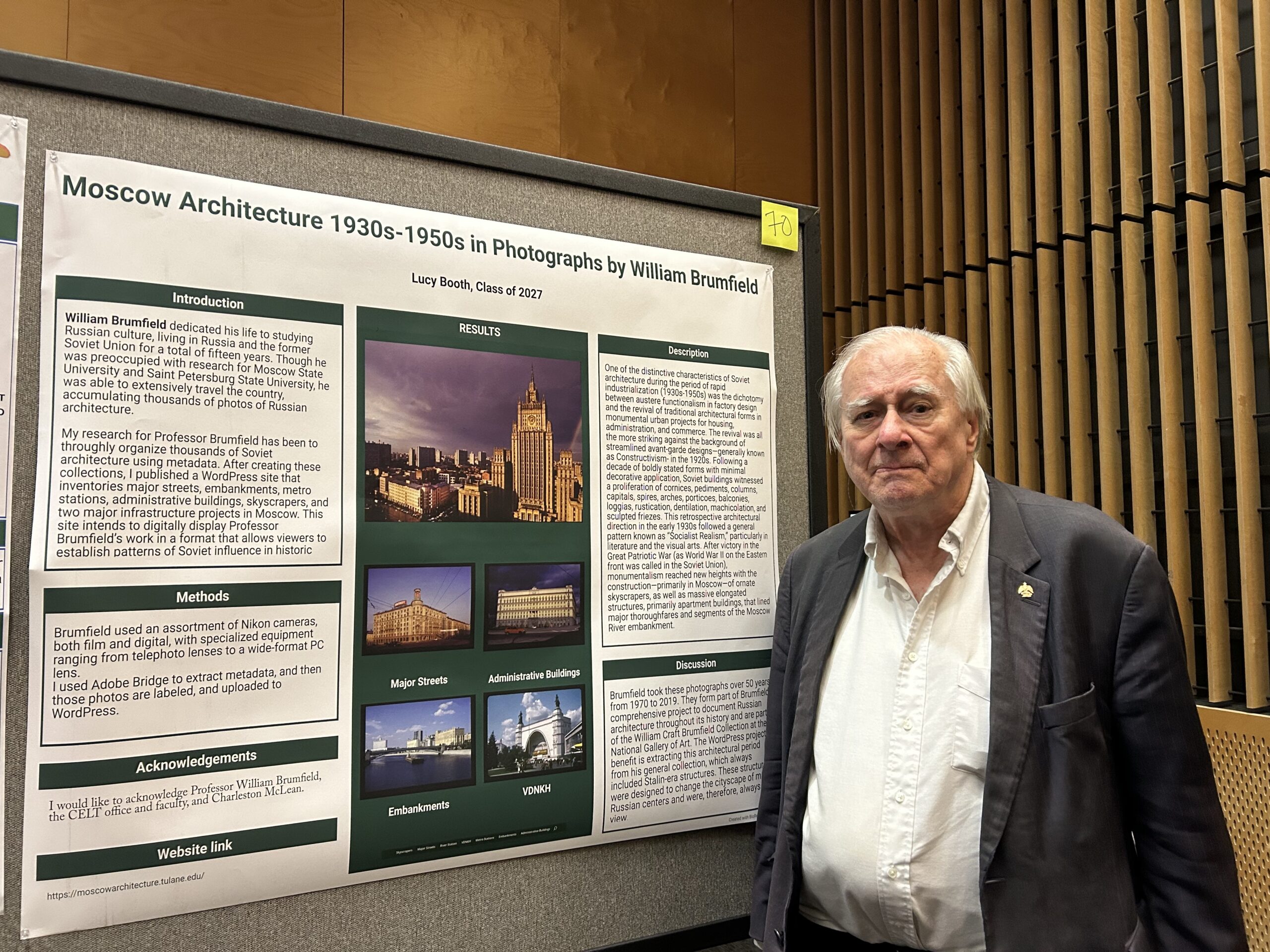The Project

Introduction
William Brumfield dedicated his life to studying Russian culture, living in Russia and the former Soviet Union for a total of fifteen years. Though he was preoccupied with research for Moscow State University and Saint Petersburg State University, he extensively traveled the country and accumulated thousands of photos of Russian architecture. My research for Professor Brumfield has been to organize thousands of Soviet architectural images following metadata properly and to use an understanding of industrialized Moscow. After creating these collections, I published a WordPress site featuring major streets, embankments, metro stations, administrative buildings, skyscrapers, and two major infrastructure projects in Moscow. This site intends to digitally display Professor Brumfield’s work in a format that allows viewers to establish patterns of Soviet influence in historic Moscow architecture.
Description
One of the distinctive characteristics of Soviet architecture during the period of rapid industrialization (1930s-1950s) was the dichotomy between austere functionalism in factory design and the revival of traditional architectural forms in monumental urban projects for housing, administration, and commerce. The revival was all the more striking against the background of streamlined avant-garde designs—generally known as Constructivism- in the 1920s. Following a decade of boldly stated forms with minimal decorative application, Soviet buildings witnessed a proliferation of cornices, pediments, columns, capitals, spires, arches, porticoes, balconies, loggias, rustication, dentilation, machicolation, and sculpted friezes. This retrospective architectural direction in the early 1930s followed a general pattern known as “Socialist Realism,” particularly in literature and the visual arts. After victory in the Great Patriotic War (as World War II on the Eastern front was called in the Soviet Union), monumentalism reached new heights with the construction—primarily in Moscow—of ornate skyscrapers, as well as massive elongated structures, primarily apartment buildings, that lined major thoroughfares and segments of the Moscow River embankment.
Discussion
Brumfield took these photographs over 50 years, from 1970 to 2019. They form part of Brumfield’s comprehensive project to document Russian architecture throughout its history and are part of the William Craft Brumfield Collection at the National Gallery of Art. The WordPress project’s benefit is extracting this architectural period from his general collection, which always included Stalin-era structures. These structures were designed to change the cityscape of major Russian centers and were, therefore, always his view.